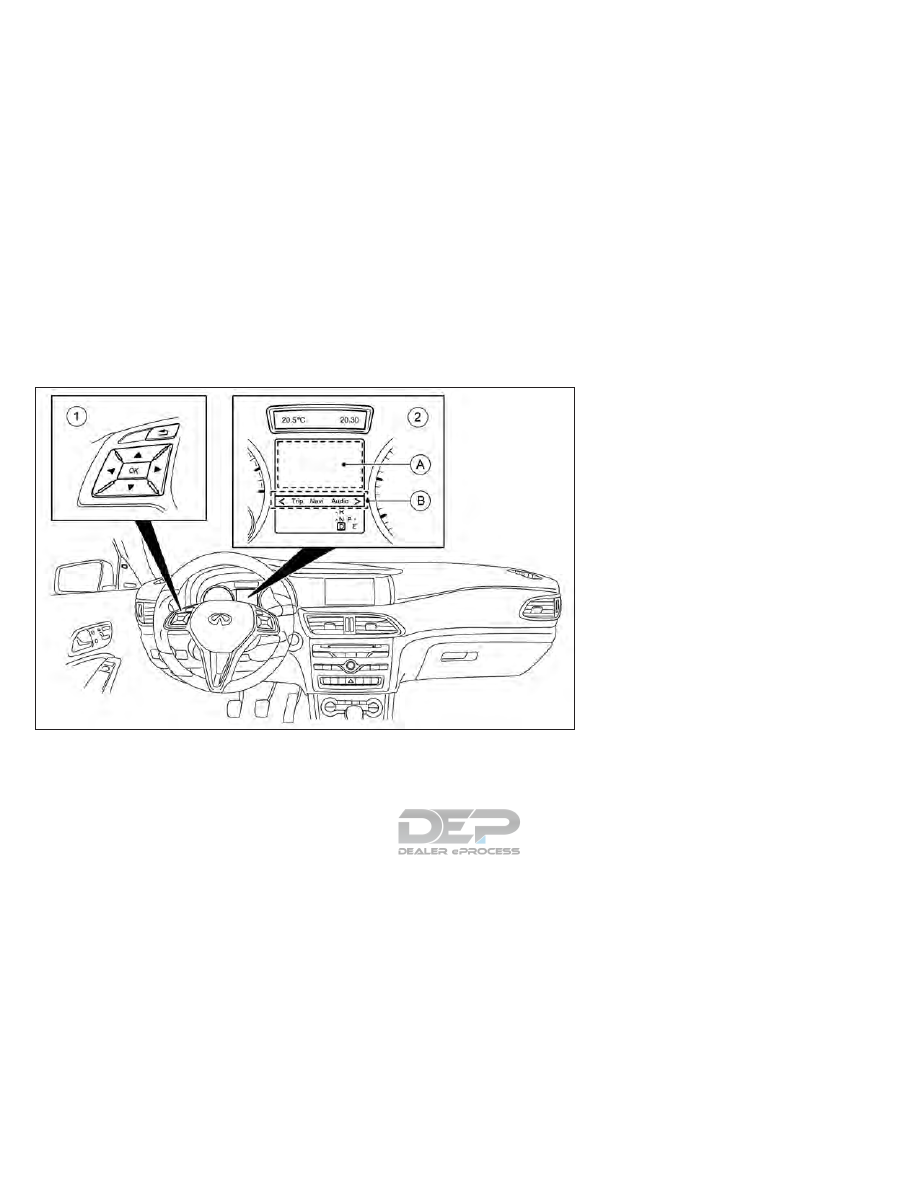Infiniti QX30 (2018 year). Manual - part 23

LDW SYSTEM OPERATION
䊊
1
Steering wheel mounted controls
䊊
2
Vehicle information display
䊊
A
Display area
䊊
B
Menu bar
The LDW system operates at speeds of ap-
proximately 40 MPH (60 km/h) and above,
when the lane markings are clear.
If the system detects that the vehicle's front
wheel has passed over the lane marking, a
warning will be provided. It will warn you by
means of intermittent vibration through the
steering wheel for up to 1.5 seconds and a
visual alert.
NOTE
The LDW system is designed not to warn
when you operate the lane change signal and
change traveling lanes in the direction of the
signal.
No warning vibration occurs if you activate
the turn signals. In this event, the warnings
are suppressed for a certain period of time.
NSD626
5-32
Starting and driving